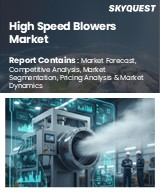
|
시장보고서
상품코드
1809765
배터리 TIC(시험, 검사, 인증) 시장 : 서비스 제공, 배터리 화학, 셀 구성, 조달 유형, 용도별 - 세계 예측(2025-2030년)Battery Testing, Inspection, & Certification Market by Service Offering, Battery Chemistry, Cell Configuration, Sourcing Type, Application - Global Forecast 2025-2030 |
||||||
배터리 TIC(시험, 검사, 인증) 시장은 2024년에는 138억 9,000만 달러로 평가되었으며, 2025년에는 155억 5,000만 달러, CAGR 12.16%로 성장하여 2030년에는 276억 7,000만 달러에 달할 것으로 예측됩니다.
| 주요 시장 통계 | |
|---|---|
| 기준 연도 2024년 | 138억 9,000만 달러 |
| 추정 연도 2025년 | 155억 5,000만 달러 |
| 예측 연도 2030년 | 276억 7,000만 달러 |
| CAGR(%) | 12.16% |
자동차, 항공우주, 통신, 에너지 저장 분야에서 배터리 기술의 급속한 보급으로 종합적인 시험, 검사, 인증 프로세스의 중요성이 커지고 있습니다. 기술 혁신이 가속화됨에 따라 제조업체와 서비스 제공업체는 엄격한 안전 및 규제 기준과 함께 점점 더 까다로워지는 성능 요건에 직면하고 있습니다.
최근 몇 년 동안 셀의 화학적 특성과 구성의 발전으로 인해 새로운 복잡성이 생겨났습니다. 일관성, 신뢰성, 안전성을 보장하기 위해서는 환경시험, 기능시험, 안전성 시험과 철저한 치수검사 및 외관검사를 통합한 일관된 프레임워크가 필요합니다. 세계 공급망이 확대됨에 따라 시장 수용을 촉진하고 국경 간 무역을 촉진하기 위해 조화로운 인증 체계의 필요성이 가장 중요해졌습니다.
이해관계자들은 진화하는 표준, 새로운 기술, 변화하는 업계 우선순위에 따라 변화하는 상황을 극복해야 합니다. 이 소개에서는 배터리 시험, 검사 및 인증 생태계의 기본 요소를 개괄적으로 설명하고, 그 이후의 변혁적 변화, 관세에 미치는 영향, 전략적 세분화에 대한 인사이트를 심도 있게 살펴볼 수 있는 발판을 마련합니다.
전례 없는 기술 발전과 규제 재검토로 배터리 시험 검사 및 인증 상황이 바뀔 것입니다.
기술의 비약적인 발전과 규제의 재검토로 인해 배터리 자산의 평가 및 검증 방법이 재구성되고 있습니다. 사물인터넷과 데이터 분석을 포함한 인더스트리 4.0의 원칙을 통합하여 생산 및 현장 서비스 전반에 걸쳐 실시간 모니터링과 예측적 품질 보증을 가능하게 했습니다.
2025년을 향한 미국의 관세 조치가 배터리 시험 검사 및 인증 생태계에 미치는 영향에 대한 평가
미국의 2025년 목표 관세 조치의 도입은 배터리 시험 검사 서비스에 큰 영향을 미칠 수 있습니다. 특수 검사 장비 및 핵심 부품의 수입 관세 인상에 직면하여 서비스 제공 업체는 공급망 재편에 따른 재무 및 경영상의 영향을 평가하고 있습니다.
세분화 분석을 통해 중요한 서비스 제공의 화학적 구성 조달 및 용도에 대한 인사이트를 얻을 수 있습니다.
서비스 제공 세분화에 대한 인사이트를 통해 시험 서비스가 전체 시장 역학에서 매우 중요한 역할을 하고 있음을 알 수 있습니다. 시험 분야에서는 가혹한 조건에서 배터리 성능을 검증할 필요성에 따라 습도, 충격, 온도, 진동 평가와 같은 환경 시험이 핵심으로 떠오르고 있습니다. 이와 함께 용량과 사이클 수명에 중점을 둔 성능 테스트도 이해관계자들이 수명과 일관성 보장을 요구함에 따라 인기를 끌고 있습니다. 안전 테스트는 전기적, 기계적, 열적 안전 평가를 통합하여 배터리 수명주기 전반에 걸쳐 잠재적 위험에 대처하는 데 있어 여전히 필수적입니다. 검사 측면에서는 치수 검사, 기능 검사, 안전 검사, 외관 검사가 통합되어 모든 생산 단계에서 물리적 적합성과 작동 무결성이 유지되도록 보장합니다.
아메리카, 유럽, 중동 및 아프리카, 아시아태평양 시장의 고유한 촉진요인과 과제를 강조하는 전략적 지역 전망
아메리카는 전기자동차 및 대규모 에너지 저장 프로젝트의 부상으로 배터리 시험, 검사 및 인증의 최전선에 서 있습니다. 주요 자동차 제조업체의 존재와 재생에너지에 대한 적극적인 노력은 엄격한 테스트 워크플로우와 고급 검사 서비스에 대한 수요를 뒷받침하고 있습니다.
기술 및 서비스 우수성을 통해 배터리 시험 검사 및 인증의 미래를 혁신하고 형성하는 주요 플레이어 프로필
배터리 테스트 및 인증 분야의 선도적인 기업들은 통합된 서비스 포트폴리오와 기술 리더십으로 두각을 나타내고 있습니다. 세계 연구소는 자동 검사 라인, 지능형 테스트 셀, AI를 활용한 데이터 분석 플랫폼 등 제공 장비의 폭을 넓혀가고 있습니다. 이들 기업은 업계 컨소시엄 및 규제 기관과 협력하여 표준화된 절차를 지속적으로 개선하고, 인증 서비스의 신뢰성과 확장성을 높이고 있습니다.
배터리 TIC(시험, 검사, 인증) 분야의 운영 우수성을 강화하고 경쟁 우위를 확보하기 위한 업계 리더를 위한 실행 가능한 전략적 이니셔티브
업계 리더는 품질 편차를 방지하고 처리량을 향상시키기 위해 디지털 모니터링 시스템과 예측 분석의 통합을 우선순위에 두어야 합니다. 모듈식 확장형 테스트 플랫폼은 일관된 공정 효율을 유지하면서 새로운 셀 형태와 화학제품에 신속하게 대응할 수 있도록 도와줍니다.
1차 조사와 2차 조사의 데이터 분석 기법을 결합한 다단계 접근 방식으로 인사이트를 뒷받침하는 엄격한 조사 방식
본 조사 방법은 구조화된 다단계 접근 방식을 채택하여 확실한 결과를 제공합니다. 먼저, 세계 표준 및 규제 지침에 대한 종합적인 검토를 통해 진화하는 인증 상황을 이해하기 위한 토대를 마련했습니다. 2차 조사는 업계 간행물, 기술 백서, 거래 데이터를 분석하여 현재 시장 관행을 매핑하는 방식으로 진행되었습니다.
지속가능한 기술 채택을 촉진하기 위한 견고한 배터리 시험 검사 및 인증의 전략적 중요성을 강조하는 결론적 인사이트.
배터리 시험, 검사 및 인증의 현황을 되돌아보면, 기술 혁신과 규제의 진화가 품질 보증 및 안전 검증의 새로운 시대를 주도하고 있음이 분명합니다. 첨단 테스트 프로토콜, 디지털 검사 도구, 전략적 파트너십을 채택하는 조직은 세계 시장의 복잡한 요구 사항을 충족할 수 있는 최적의 위치에 있습니다.
목차
제1장 서문
제2장 조사 방법
제3장 주요 요약
제4장 시장 개요
제5장 시장 역학
제6장 시장 인사이트
- Porter's Five Forces 분석
- PESTEL 분석
제7장 미국 관세의 누적 영향 2025
제8장 배터리 TIC(시험, 검사, 인증) 시장 : 서비스 제공별
- 인증
- 검사
- 치수 검사
- 기능 검사
- 안전 검사
- 육안 검사
- 시험
- 환경 시험
- 습도 시험
- 충격 시험
- 온도 시험
- 진동 시험
- 퍼포먼스 시험
- 용량 시험
- 주기 수명 시험
- 안전성 시험
- 전기 안전성
- 기계 안전성
- 열 안전성
- 환경 시험
제9장 배터리 TIC(시험, 검사, 인증) 시장 : 배터리 화학별
- 납축배터리
- 리튬이온
- 코발트산 리튬
- 인산철리튬
- 망간산 리튬
- 리튬 니켈 망간 코발트
- 티탄산 리튬
- 니켈 수소
제10장 배터리 TIC(시험, 검사, 인증) 시장 : 셀 구성별
- 코인 셀
- 원통형 셀
- 파우치 셀
- 프리즈매틱 셀
제11장 배터리 TIC(시험, 검사, 인증) 시장 : 조달 유형별
- 사내
- 아웃소싱
제12장 배터리 TIC(시험, 검사, 인증) 시장 : 용도별
- 항공우주
- 자동차
- 전기자동차
- 하이브리드 자동차
- 가전제품
- 노트북
- 스마트폰
- 태블릿
- 웨어러블
- 방위
- 에너지 저장 시스템
- 상업용 스토리지
- 그리드 스토리지
- 주거용 스토리지
- 헬스케어 및 의료기기
- 통신
제13장 아메리카의 배터리 TIC(시험, 검사, 인증) 시장
- 미국
- 캐나다
- 멕시코
- 브라질
- 아르헨티나
제14장 유럽, 중동 및 아프리카의 배터리 TIC(시험, 검사, 인증) 시장
- 영국
- 독일
- 프랑스
- 러시아
- 이탈리아
- 스페인
- 아랍에미리트
- 사우디아라비아
- 남아프리카공화국
- 덴마크
- 네덜란드
- 카타르
- 핀란드
- 스웨덴
- 나이지리아
- 이집트
- 튀르키예
- 이스라엘
- 노르웨이
- 폴란드
- 스위스
제15장 아시아태평양의 배터리 TIC(시험, 검사, 인증) 시장
- 중국
- 인도
- 일본
- 호주
- 한국
- 인도네시아
- 태국
- 필리핀
- 말레이시아
- 싱가포르
- 베트남
- 대만
제16장 경쟁 구도
- 시장 점유율 분석, 2024
- FPNV 포지셔닝 매트릭스, 2024
- 경쟁 분석
- TUV SUD AG
- UL LLC
- Intertek Group plc
- SGS S.A.
- Bureau Veritas
- TUV Rheinland AG
- DEKRA SE
- Element Materials Technology Group Limited
- Applus+Servicios Tecnologicos, S.L
- CSA Group
- ALS Limited
- AMETEK.Inc.
- DNV AS
- Kiwa NV
- TRIGO Group
- Arbin Instruments
- HIOKI USA Corporation
- Eurofins Scientific SE
- LabTest Certification Inc.
- Element Materials Technology Group Limited
- Nemko Group AS
- IMV Corporation
- Guangdong ESTL Technology Co., Ltd.
- Dongguan Lepont Testing Service Co., Ltd.
- Ace Test Labs
제17장 리서치 AI
제18장 리서치 통계
제19장 리서치 컨택트
제20장 리서치 기사
제21장 부록
KSM 25.09.23The Battery Testing, Inspection, & Certification Market was valued at USD 13.89 billion in 2024 and is projected to grow to USD 15.55 billion in 2025, with a CAGR of 12.16%, reaching USD 27.67 billion by 2030.
| KEY MARKET STATISTICS | |
|---|---|
| Base Year [2024] | USD 13.89 billion |
| Estimated Year [2025] | USD 15.55 billion |
| Forecast Year [2030] | USD 27.67 billion |
| CAGR (%) | 12.16% |
The rapid proliferation of battery technologies across the automotive, aerospace, telecommunications, and energy storage sectors has elevated the criticality of comprehensive testing, inspection, and certification processes. As innovation accelerates, manufacturers and service providers are confronted with increasingly rigorous performance requirements alongside stringent safety and regulatory standards.
In recent years, advancements in cell chemistries and configurations have introduced new vectors of complexity. Ensuring consistency, reliability, and safety demands a cohesive framework that integrates environmental, functional, and safety testing with thorough dimensional and visual inspections. As global supply chains expand, the need for harmonized certification schemes has become paramount to foster market acceptance and facilitate cross-border trade.
Stakeholders must navigate a landscape shaped by evolving standards, emerging technologies, and shifting industry priorities. This introduction outlines the foundational elements of the battery testing, inspection, and certification ecosystem, setting the stage for a deeper exploration of the transformative shifts, tariff impacts, and strategic segmentation insights that follow.
Unprecedented Technological Advances and Regulatory Overhauls Transforming the Battery Testing Inspection and Certification Landscape
Technological breakthroughs and regulatory revisions are reshaping the ways in which battery assets are evaluated and validated. The integration of Industry 4.0 principles, including the Internet of Things and data analytics, has enabled real-time monitoring and predictive quality assurance throughout production and field service.
At the same time, updated global standards have introduced more comprehensive performance criteria, emphasizing thermal stability, cycle life, and environmental resilience. Regulatory agencies are increasingly mandating standardized test protocols to mitigate safety risks and drive sustainable practices across the value chain.
The convergence of digital inspection tools, automated test rigs, and advanced sensor technologies has streamlined processes, reduced human error, and accelerated time to market. As a result, equipment providers and laboratories are investing in next-generation platforms that support end-to-end traceability and rapid compliance verification. These transformative shifts underscore the imperative for organizations to adopt agile testing and certification strategies aligned with the future trajectory of battery innovation.
Assessing the Far-Reaching Consequences of United States Tariffs Announced for 2025 on Battery Testing Inspection and Certification Ecosystems
The introduction of targeted tariff measures in the United States for 2025 is poised to exert significant influence on battery testing and inspection services. Faced with elevated import duties on specialized testing equipment and critical components, service providers are evaluating the financial and operational ramifications of realigning supply chains.
As a direct consequence, many organizations are accelerating investments in domestic laboratory capabilities and forging partnerships with local equipment manufacturers. This shift not only mitigates exposure to import costs but also shortens lead times for new test fixtures and inspection apparatus. Simultaneously, multinational providers are reassessing their global footprint to ensure continuity of service and adherence to stringent compliance schedules.
Moreover, the tariff environment has catalyzed renewed focus on cost optimization and strategic sourcing. Companies are exploring modular testing architectures and standardized inspection protocols to streamline capital expenditures while maintaining high safety and quality benchmarks. Ultimately, navigating the 2025 tariff landscape requires a balanced approach that safeguards service excellence and fosters resilient operational models.
Deep Dive into Segmentation Analysis Revealing Critical Service Offering Chemistry Configuration Sourcing and Application Insights
Insights into the service offering segmentation reveal that testing services command a pivotal role in the overall market dynamics. Within the testing domain, environmental testing-spanning humidity, shock, temperature, and vibration assessments-has emerged as a cornerstone due to the need to validate battery performance under extreme conditions. Parallel to this, performance testing that focuses on capacity and cycle life is gaining traction as stakeholders demand assurances of longevity and consistency. Safety testing remains indispensable, integrating electrical, mechanical, and thermal safety evaluations to address potential hazards throughout a battery's lifecycle. On the inspection side, dimensional, functional, safety, and visual inspections collectively ensure that physical conformity and operational integrity are maintained at every production stage.
Analysis of battery chemistry segmentation underscores the dominance of lithium-based technologies, with lithium cobalt oxide, lithium iron phosphate, lithium manganese oxide, lithium nickel manganese cobalt, and lithium titanate variants each presenting distinct testing requirements. Lead acid and nickel metal hydride chemistries continue to attract specialized certification protocols driven by legacy applications and sustainability considerations.
When examining cell configuration, cylindrical, pouch, prismatic, and coin cells each demand customized inspection fixtures and test procedures to accommodate varied form factors. The sourcing type paradigm highlights the strategic trade-off between in-house laboratories, which offer tighter quality control, and outsourced facilities that provide scalability and specialized expertise. Finally, application-based segmentation across aerospace, automotive for electric and hybrid vehicles, consumer electronics for laptops, smartphones, tablets, and wearables, defense, energy storage systems encompassing commercial, grid, and residential storage, and healthcare devices reinforces the nuanced testing and certification landscape reflecting each sector's operational and regulatory imperatives.
Strategic Regional Perspectives Highlighting Unique Drivers and Challenges Across Americas Europe Middle East Africa and Asia Pacific Markets
The Americas region remains at the forefront of battery testing, inspection, and certification, driven by the rise of electric vehicles and large-scale energy storage projects. The presence of major automotive manufacturers and robust renewable energy initiatives sustains demand for rigorous testing workflows and advanced inspection services.
In Europe, Middle East, and Africa, regulatory harmonization efforts and green energy policies continue to shape certification frameworks. Key markets within this region emphasize sustainability and safety, prompting service providers to offer tailored protocols that align with diverse regulatory regimes and application environments.
Asia-Pacific stands out as a manufacturing and innovation hub, where opportunities in consumer electronics, telecommunications, and industrial sectors fuel the expansion of testing and inspection facilities. Government incentives and investments in research infrastructures bolster capacity for high-volume performance and environmental testing, reinforcing the region's pivotal role in global supply chains.
Profiling Leading Players Innovating and Shaping the Future of Battery Testing Inspection and Certification Through Technological and Service Excellence
Leading organizations in the battery testing and certification arena are distinguished by their integrated service portfolios and technological leadership. Established global laboratories have broadened their equipment offerings to encompass automated inspection lines, intelligent test cells, and AI-powered data analysis platforms. These players continue to refine standardized procedures in collaboration with industry consortia and regulatory bodies, enhancing the credibility and scalability of certification services.
Meanwhile, specialized firms have carved out niches by focusing on emerging chemistries and high-voltage applications, investing in bespoke test chambers and advanced safety assessment tools. Strategic alliances between testing providers and original equipment manufacturers have facilitated streamlined knowledge transfer and co-development of next-generation validation methodologies.
Furthermore, a growing cohort of battery manufacturers is insourcing critical testing activities, erecting state-of-the-art laboratories on site to maintain tighter quality control and reduce time to market. This hybrid model underscores the evolving competitive landscape, wherein agility and technological differentiation are key determinants of market influence.
Actionable Strategic Initiatives for Industry Leaders to Enhance Operational Excellence and Gain Competitive Advantage in Battery Testing Inspection Certification
Industry leaders should prioritize the integration of digital monitoring systems and predictive analytics to preempt quality deviations and bolster throughput. By adopting modular, scalable test platforms, organizations can rapidly adapt to new cell formats and chemistries while maintaining consistent process efficiency.
Establishing collaborative partnerships with equipment vendors and research institutions can accelerate the development of specialized test protocols and inspection algorithms, reducing validation timelines. Emphasizing skills development through targeted training programs ensures that laboratory personnel remain proficient in the latest standards and testing methodologies.
Additionally, companies should evaluate regional expansion strategies that leverage local regulatory knowledge and proximity to manufacturing centers. Balancing in-house capabilities with selective outsourcing allows for optimized capacity management and access to niche expertise. Ultimately, these strategic initiatives will strengthen operational resilience and unlock new avenues for market differentiation.
Rigorous Research Methodology Underpinning Insights with a Multiphase Approach Combining Primary and Secondary Data Analysis Techniques
This research employs a structured multiphase methodology to deliver robust insights. Initially, a comprehensive review of global standards and regulatory directives formed the foundation for understanding the evolving certification landscape. Secondary research encompassed analysis of industry publications, technical white papers, and trade data to map current market practices.
Subsequently, primary research was conducted through in-depth interviews with key stakeholders, including testing laboratory managers, regulatory experts, and battery technology innovators. Site visits to leading test facilities provided contextual understanding of operational challenges and technological capabilities in real environments.
Data triangulation techniques were applied to reconcile findings from multiple sources, ensuring consistency and validity. Expert panels reviewed draft conclusions, offering critical feedback that refined the analysis. The final step involved synthesizing these elements into actionable recommendations and strategic frameworks designed to guide decision-makers toward informed investment and operational optimization.
Concluding Reflections Emphasizing the Strategic Imperative of Robust Battery Testing Inspection and Certification in Driving Sustainable Technology Adoption
In reviewing the current state of battery testing, inspection, and certification, it is evident that technological innovation and regulatory evolution are driving a new era of quality assurance and safety validation. Organizations that embrace advanced testing protocols, digital inspection tools, and strategic partnerships will be best positioned to navigate the complex requirements of global markets.
As tariff landscapes shift and application demands diversify, a proactive approach to testing and certification becomes a strategic imperative. By aligning service offerings with emerging cell chemistries, inspection standards, and regional priorities, stakeholders can secure competitive advantage and foster long-term resilience.
Looking ahead, the convergence of automation, data analytics, and collaborative frameworks is set to redefine industry benchmarks. Companies that invest now in agile, scalable, and digitally enabled validation processes will drive sustainable growth and set new standards for safety and performance across the battery ecosystem.
Table of Contents
1. Preface
- 1.1. Objectives of the Study
- 1.2. Market Segmentation & Coverage
- 1.3. Years Considered for the Study
- 1.4. Currency & Pricing
- 1.5. Language
- 1.6. Stakeholders
2. Research Methodology
- 2.1. Define: Research Objective
- 2.2. Determine: Research Design
- 2.3. Prepare: Research Instrument
- 2.4. Collect: Data Source
- 2.5. Analyze: Data Interpretation
- 2.6. Formulate: Data Verification
- 2.7. Publish: Research Report
- 2.8. Repeat: Report Update
3. Executive Summary
4. Market Overview
- 4.1. Introduction
- 4.2. Market Sizing & Forecasting
5. Market Dynamics
- 5.1. AI-driven predictive analytics for battery lifecycle performance forecasting and testing
- 5.2. Implementation of advanced non-destructive evaluation techniques for battery cell integrity assessment
- 5.3. Comprehensive fast-charging protocol testing to ensure battery durability under high power conditions
- 5.4. Regulatory compliance strategies for evolving UN 38.3 lithium battery transportation safety standards
- 5.5. Standardizing testing methodologies for emerging solid-state battery chemistries and architectures
- 5.6. Integration of IoT-enabled remote monitoring systems for real-time battery health diagnostics
- 5.7. Development of second-life battery repurposing certification frameworks for energy storage applications
- 5.8. Thermal runaway suppression validation protocols for high-capacity electric vehicle battery packs
- 5.9. Third-party certification processes for residential and commercial battery energy storage installations
- 5.10. Thermal imaging and acoustic analysis adoption in battery module inspection to detect early faults
6. Market Insights
- 6.1. Porter's Five Forces Analysis
- 6.2. PESTLE Analysis
7. Cumulative Impact of United States Tariffs 2025
8. Battery Testing, Inspection, & Certification Market, by Service Offering
- 8.1. Introduction
- 8.2. Certification
- 8.3. Inspection
- 8.3.1. Dimensional Inspection
- 8.3.2. Functional Inspection
- 8.3.3. Safety Inspection
- 8.3.4. Visual Inspection
- 8.4. Testing
- 8.4.1. Environmental Testing
- 8.4.1.1. Humidity Testing
- 8.4.1.2. Shock Testing
- 8.4.1.3. Temperature Testing
- 8.4.1.4. Vibration Testing
- 8.4.2. Performance Testing
- 8.4.2.1. Capacity Testing
- 8.4.2.2. Cycle Life Testing
- 8.4.3. Safety Testing
- 8.4.3.1. Electrical Safety
- 8.4.3.2. Mechanical Safety
- 8.4.3.3. Thermal Safety
- 8.4.1. Environmental Testing
9. Battery Testing, Inspection, & Certification Market, by Battery Chemistry
- 9.1. Introduction
- 9.2. Lead Acid
- 9.3. Lithium Ion
- 9.3.1. Lithium Cobalt Oxide
- 9.3.2. Lithium Iron Phosphate
- 9.3.3. Lithium Manganese Oxide
- 9.3.4. Lithium Nickel Manganese Cobalt
- 9.3.5. Lithium Titanate
- 9.4. Nickel Metal Hydride
10. Battery Testing, Inspection, & Certification Market, by Cell Configuration
- 10.1. Introduction
- 10.2. Coin Cell
- 10.3. Cylindrical Cell
- 10.4. Pouch Cell
- 10.5. Prismatic Cell
11. Battery Testing, Inspection, & Certification Market, by Sourcing Type
- 11.1. Introduction
- 11.2. In-house
- 11.3. Outsourced
12. Battery Testing, Inspection, & Certification Market, by Application
- 12.1. Introduction
- 12.2. Aerospace
- 12.3. Automotive
- 12.3.1. Electric Vehicles
- 12.3.2. Hybrid Vehicles
- 12.4. Consumer Electronics
- 12.4.1. Laptops
- 12.4.2. Smartphones
- 12.4.3. Tablets
- 12.4.4. Wearables
- 12.5. Defense
- 12.6. Energy Storage Systems
- 12.6.1. Commercial Storage
- 12.6.2. Grid Storage
- 12.6.3. Residential Storage
- 12.7. Healthcare & Medical Devices
- 12.8. Telecommunication
13. Americas Battery Testing, Inspection, & Certification Market
- 13.1. Introduction
- 13.2. United States
- 13.3. Canada
- 13.4. Mexico
- 13.5. Brazil
- 13.6. Argentina
14. Europe, Middle East & Africa Battery Testing, Inspection, & Certification Market
- 14.1. Introduction
- 14.2. United Kingdom
- 14.3. Germany
- 14.4. France
- 14.5. Russia
- 14.6. Italy
- 14.7. Spain
- 14.8. United Arab Emirates
- 14.9. Saudi Arabia
- 14.10. South Africa
- 14.11. Denmark
- 14.12. Netherlands
- 14.13. Qatar
- 14.14. Finland
- 14.15. Sweden
- 14.16. Nigeria
- 14.17. Egypt
- 14.18. Turkey
- 14.19. Israel
- 14.20. Norway
- 14.21. Poland
- 14.22. Switzerland
15. Asia-Pacific Battery Testing, Inspection, & Certification Market
- 15.1. Introduction
- 15.2. China
- 15.3. India
- 15.4. Japan
- 15.5. Australia
- 15.6. South Korea
- 15.7. Indonesia
- 15.8. Thailand
- 15.9. Philippines
- 15.10. Malaysia
- 15.11. Singapore
- 15.12. Vietnam
- 15.13. Taiwan
16. Competitive Landscape
- 16.1. Market Share Analysis, 2024
- 16.2. FPNV Positioning Matrix, 2024
- 16.3. Competitive Analysis
- 16.3.1. TUV SUD AG
- 16.3.2. UL LLC
- 16.3.3. Intertek Group plc
- 16.3.4. SGS S.A.
- 16.3.5. Bureau Veritas
- 16.3.6. TUV Rheinland AG
- 16.3.7. DEKRA SE
- 16.3.8. Element Materials Technology Group Limited
- 16.3.9. Applus+ Servicios Tecnologicos, S.L
- 16.3.10. CSA Group
- 16.3.11. ALS Limited
- 16.3.12. AMETEK.Inc.
- 16.3.13. DNV AS
- 16.3.14. Kiwa NV
- 16.3.15. TRIGO Group
- 16.3.16. Arbin Instruments
- 16.3.17. HIOKI USA Corporation
- 16.3.18. Eurofins Scientific SE
- 16.3.19. LabTest Certification Inc.
- 16.3.20. Element Materials Technology Group Limited
- 16.3.21. Nemko Group AS
- 16.3.22. IMV Corporation
- 16.3.23. Guangdong ESTL Technology Co., Ltd.
- 16.3.24. Dongguan Lepont Testing Service Co., Ltd.
- 16.3.25. Ace Test Labs



















